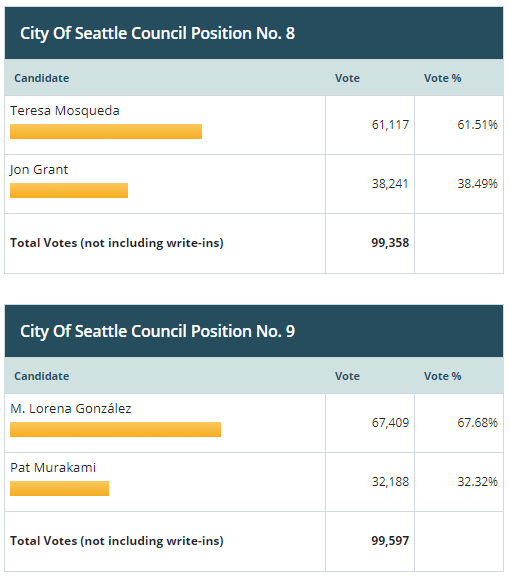Hey there #Hashtagers, hope everyone had a great 2017 full of friends, family, food, or some combination thereof! Welcome to the new and "improved" #Hashtag blog, where I vow – vow! – to write a post at least every other week (though hopefully weekly!) If I start slacking, please call me out on twitter or email. I work best when I get publicly shamed for not doing what I said I'd do! And hey - if you’re lucky, I might even blog about the city’s new accounting system that I hear is quite interesting.
This week, I’m back with another look at an important debate in Seattle policy circles which #CentristDataMining can hopefully put to rest. I’m going to show you a huge, persistent mistruth that permeates Seattle policy debates, an argument that even some City Councilmembers still state to this day.
I’m talking about the housing shortage.
First, let me define what I mean when I say the phrase “housing shortage”. Cribbing from Wikipedia, shortage is defined as, “a shortage or excess demand is a situation in which the demand for a product or service exceeds its supply in a market.” So, a housing shortage is a situation in which the demand for housing exceeds its supply. This leads the obvious question: how do we determine the demand and supply of housing?
In my theory of the case, I believe demand is primary driven by job growth. Few move here if they or their partner don’t have a job in the city. To that end, I’ll estimate the change in job growth from 2010 until last year by looking at the change in employment. From the City of Seattle, Seattle had 462,985 jobs in 2010 and 558,023 jobs in 2016 - a net job growth of 95,038 jobs. There’s no data available for 2017 yet, but let’s call it 100,000 net new jobs since 2010.
For supply, we get to use our Super Awesome multifamily housing data set lovingly provided by the Seattle Times, and we can exactly say how many units of multifamily housing per since 2010. From that data, Seattle has built 32,016 units of multifamily housing in the last 7 years. I’ll note that this number isn’t the net number of multifamily units, but as we saw in a previous #Hashtag, physical displacement is quite rare, so the net number of units is quite close.
Now, we assume each new unit is occupied – on average – with 1.2 people, that means Seattle added enough housing for around 40,000 people.
40,000 people when jobs grew by over two and a half times that amount.
That’s what the housing shortage is. It’s not building enough for the jobs that we’re adding. And this analysis isn’t even taking in to account any deficits that came before 2010.
I can think of a few rebuttals people might say to this.
First, they might say that not everyone who has a job in Seattle will want to live in Seattle – that’s true. But for every person who wants to commute in to the city to work, there’s another who works in the suburbs and commutes out. I was one of those people while I worked over in Redmond – commuting day after day until I got sick of it and took a job in Downtown.
People might also object saying that the housing being created isn’t affordable to most people. That’s definitely true, too. But it’s not like people moving here for tech jobs – largely highly paid – who want to live in the city wouldn’t live in the city had those “luxury” apartments not been built. They simply would have rented in the older buildings, and have the rents increased for the other tenants, and so on down the list. Further, a good chunk of new buildings leverage the Multi Family Tax Exemption program, which provides housing that’s affordable to those making 80% of AMI or lower in exchange for a reduction in property taxes.
I think that many will be skeptical of these findings. People feel like construction is all around them. I can feel it too – it feels like every other block is being redeveloped. But compared to our awesome job growth, the housing stock is lagging. We have a huge housing deficit that’s going to have to be filled somehow. If someone wants to figure out how to design, permit, and construct public owned housing to fill this need, I’ll definitely be for it.
Until that's solved, we need to keep building.


